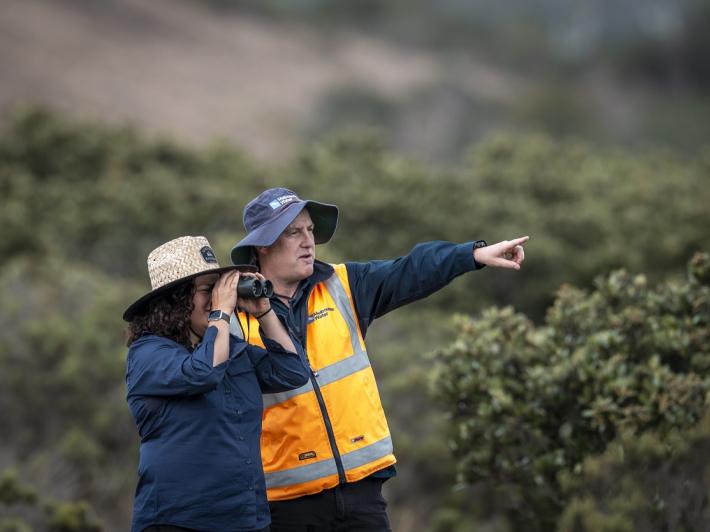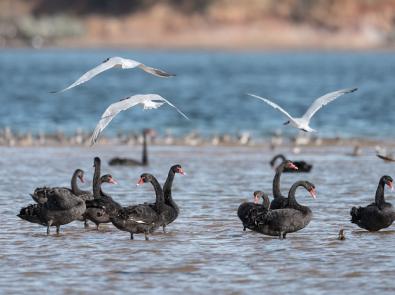Melbourne Water protects Ramsar wetlands, vital for wildlife, culture, clean water and flood resilience. We work with partners to secure their future.
Melbourne Water’s role as Ramsar site manager and coordinator
Wetlands are vital to life. They protect our homes and landscapes from floods, help purify our water, support agriculture, and store carbon. They also support rich and diverse ecosystems, providing sanctuary for migratory birds, fish, frogs, mammals, insects, and plants. In Melbourne, they are places of cultural, spiritual and ecological importance. They’re essential to the health of our environment – and to the way we live.
As our city grows and the climate changes, these ecosystems face increasing pressure. Sea level rise, increased frequency and intensity of storms, invasive species, development and pollution are changing our wetlands faster than they can recover. Globally, wetlands are disappearing three times faster than forests, making them the most rapidly declining ecosystem in the world. The challenge is complex and the responsibility is shared.
Working together to protect what matters
At Melbourne Water, we are working in partnership to protect and manage our Ramsar-listed wetlands. In Victoria there are 12 internationally recognised Ramsar sites, and we care for three of them:
- Port Phillip Bay (Western Shoreline) and Bellarine Peninsula
-
Melbourne Water are the site manager for the Western Treatment Plant. This extensive coastal wetland includes the Western Treatment Plant lagoons – one of Australia’s most important habitats for waterbirds. It provides crucial feeding and roosting grounds for tens of thousands of migratory birds each year and is a stronghold for rare species like the Orange-bellied Parrot and Growling Grass Frog.
- Edithvale-Seaford Wetland
-
Melbourne Water are the Site Manager and Site Coordinator for Edithvale-Seaford Wetland. The last remaining pocket of the once vast Carrum Carrum Swamp, this freshwater wetland is the largest of its kind in the region. Tucked within suburbia, it offers a rare sanctuary for migratory birds like the Sharp-tailed Sandpiper, while helping to manage floodwaters and improve water quality flowing into Port Phillip Bay.
- Western Port Wetlands
-
Melbourne Water are the site coordinator for Western Port. Just over an hour from Melbourne, Western Port is a dynamic tidal bay known for its expansive mudflats, which stretch across 270 square kilometres at low tide. These rich feeding grounds attract thousands of migratory shorebirds, including the critically endangered Eastern Curlew, Fairy Tern, and Curlew Sandpiper.
We work with Traditional Owners, local communities, researchers and environmental groups to maintain or improve the ecological values of these sites. That includes managing water levels, controlling invasive species, supporting habitat restoration, monitoring threatened species and sharing knowledge about the values that make these places unique.
Protecting wetlands, protecting us
We aim to ensure these wetlands thrive – not just for the species that depend on them now, but for the people who rely on them for clean water, flood protection, climate resilience, cultural connection and a sense of place. When wetlands are healthy, so are we. Protecting them today means they’ll continue to support life – for generations to come.
You may also like...
Two Great Ramsar Wetlands
The Two Great Ramsar Wetlands project is a five-year project (2018-23) led by Melbourne Water that aims to bring key agencies, land managers and community groups together to reduce the threats to the Port Phillip and Western Port Ramsar sites at Port Phillip Bay (western shoreline) and Western Port.
Ramsar Protection Program
The Ramsar Protection Program is a long-term, collaborative environmental program working to maintain or improve the ecological values of the Western Port and Port Phillip Bay western shoreline Ramsar wetlands sites.

